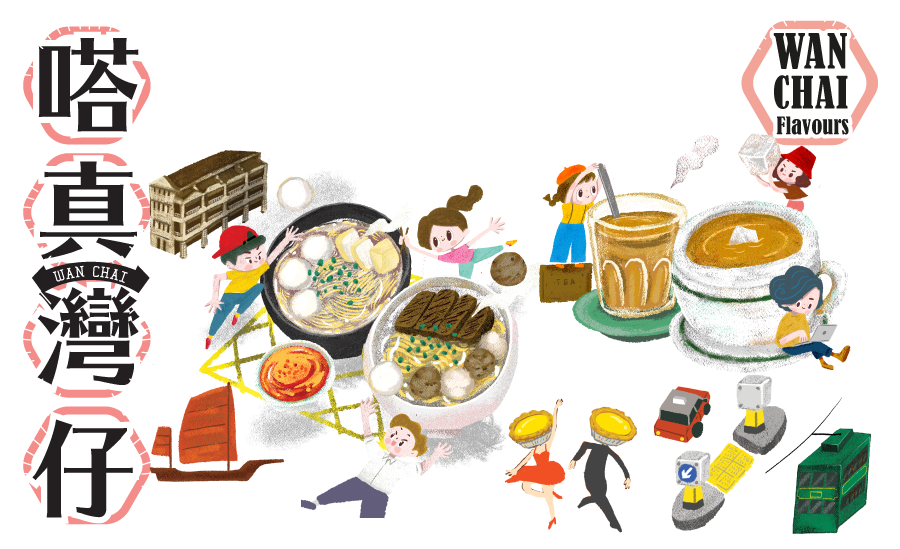
序言 │ Introduction

The project "Wan Chai à la Carte" has spanned over a decade. In the past two years, the world has never before experienced the anguish of the pandemic and its negative impact on trade and commerce. No matter what is happening, people do have to whet their appetite for culinary delights. Especially during leisurely times, they become more subtly demanding for the unique tastes that represent the local cultural identity, such as pineapple buns, Hong Kong style milk tea and egg tarts.
The theme of this year's project is "Dap Zan Wan Chai" (Wan Chai Flavours). It is worth mentioning that the word “Dap Zan” is a Cantonese colloquial term, which means to munch, authenticate and appreciate the essence of food and culture and the lasting sensation of taste that lingers in the heart.
短片 | Video
The pineapple bun is definitely one of the most popular snacks of Hong Kong, which looks plump with a sweet and crispy crust to offer a delicious bite. It is not only popular among local people, but also a famous international delicacy. Let's see how to make it!
Acknowledgement |
ABC Cake House |
With a thin wrapping and succulent filling, the Soup Dumpling is a Chinese delicacy popular all over the world. What is more, it is such a pleasant surprise to take a bite of the delicious soup-like filling. It was originally a Soup Dumpling in Bianjing, the capital of the Northern Song Dynasty.
Acknowledgement |
Lao Xue Yuan |
Deep-Fried Custard of Chicken Broth, or “Tai Si Gwoh Jar” is a traditional Cantonese dish that fully reflects the subtle exquisiteness and skills of Cantonese cuisine. Let's see how to make it!
Acknowledgement |
Kin's Kitchen |
美食誌 │ Food Blog 
The vanishing taste 1: There were more associated with a theatre than just popcorn
“Waiting for the commencement of a theatrical performance while munching peanuts” is an idiomatic expression now to describe someone standing indifferently at the scene of a happening. In a way, it does reveal the inseparable relationship between food and entertainment. Before the advent of the internet era, going to cinemas was the most popular entertainment among all.
The Hong Kong Grand Theatre, located on Queen's Road East and opened in the 1910s, was the first theatre in Wan Chai. In the early years, movies had not yet become popular and the theatres were solely for the performance of Cantonese operas. Some theatres could accommodate over a thousand people. Order in the theatres was kind of unrestrained and unorderly in that while the performers were trying their best on the stage, as usual, the hawkers were busy running around the audience, shouting and yelling, to peddle mostly light snacks such as tea, fruits, melon seeds, and the like.
In 1927, the Lee Theatre on Percival Street, Causeway Bay opened its doors and introduced a new set of rules of management: the ground floor was modeled after those of the Euro-American theatres where peddling of any kinds was strictly forbidden, the audience were advised to be neatly dressed and behave appropriately; but the balconies upstairs retained all the old practices of a typical Chinese theatre. In this case, the decision was solely up to the pleasure of the individual audience.
Entering the 1930s, the new reclamation area in Wan Chai was nearly completed. The Oriental Theatre on Fleming Road opened in 1932. It was a first-round theatre with a relatively high-end look. The adjacent Ying King Restaurant was an upscale Cantonese restaurant at the time. It was meticulously well-equipped and was one of the few restaurants that had the expertise to serve the "Man-Han Feast," which is extremely formal and sumptuous combining a wide variety of Manchurian and Han delicacies. It was a small wonder that such a short street soon became the most popular convergence point of entertainment and culinary delicacies.
Subsequently, one by one, the local theatres such as the Cathay theatre, Rialto Theatre, East Town Theatre, Imperial Cinema also gradually opened for business. The number of theatres started mushrooming after World War II. At this time, the theatre-goers were allowed to bring in their own snacks. Thus, the snack stalls at the front of a theatre made quite a scene to have grilled squids, roasted chestnuts, braised pigskin and radish, pickled vegetable and fruit, sugar canes, braised beef entrails, spicy marinated meats and a variety of other light snacks. It was common for people to enjoy their favorite snacks while watching a show. It was no surprise that food scums were scattered all over the floor when the lights turned on after a show.
In the 1980s, the American style of cinema management was introduced to Hong Kong, which was to divide a cinema into multiple mini-cinemas with a common commissary to prohibit the audience to bring in their own foods. Since then, American popcorn has become the signature cinema-delicacy, deeply rooted in people's hearts.
The vanishing tastes 2: Three dragons and weird fish
It is a bit odd to think about it that the “Tea Houses” are now widely referred to as “Wine Houses” in daily dialogs though they have been more or less restaurants of the same nature. At the beginning of Hong Kong's colonial period, there was a clear role between the Tea Houses and the Wine Houses whereas the former served Dim Sum and Tea, being open only for breakfast and lunch hours; the latter were high-end evening dining establishments that co-existed with the booming years of the brothels, which were mainly located in the area of Shek Tong Tsui. They were all magnificent and luxurious, three or four storey independent buildings.
The newly reclaimed area in Wan Chai was completed in the late 1920s, since then restaurants had sprung up like mushrooms, especially after the war. On Johnston Road alone, there were two restaurants, “Double Happiness” and “Dragon and Phoenix”; later the latter and two other restaurants, which were “Dragon Court” and “Dragon Group” located in the same neighborhood, were referred to as the Three Dragons. At this time, what was a Wine House had long since faded away from its 19th century colors associated with the brothels and become a popular venue for all folks to pass the time of day with a cup of tea and two kinds of dim sum.
The Wan Chai restaurants would prefer names of auspicious greetings so as to wish for good fortunes, such as “Double Happiness”, “Royal Straight Flush” and “Brilliant Son”. Oddly enough, there was one with a very funny name, New Asia's Weird Fish Restaurant located at the junction of Fleming Road and Hennessy Road.
The restaurant opened in 1937. The so-called weird fish was probably the kind of rarely seen deep-sea fish, due to that the technical support for keeping live saltwater fish in tanks had not been well developed. Therefore, what was served on the dinner tables were only the freshwater fish cultured in fish ponds or the saltwater fish caught in the sea and preserved in ice containers. So Leung, the owner of New Asia's, managed to create the first scientific fish tank to keep deep-sea fish alive. Later, he even proceeded to build a mechanically equipped fishing boat for fishing and dispatch the catch directly to the storefront fish tanks for diners to select their favorite fish, which was the most innovative catering operation of the time, ranging from catching, preserving and cooking in a one-stop service of freshness.
What really impressed the folks in the neighborhood was the storefront mural depicting the wonders under the sea, on which there were a diver with a bronze helmet and a mermaid.
At every year-end, the owner would have the mural wiped out and repainted in another underwater scene in a different composition so as to present a fresh look to the public. A local writer, Siu See, who used to live across the street opposite to the restaurant, remembers her childhood days, leaning upon the windows of her room for days to watch the painter at work. The completion of the painting would tell of the coming of the Lunar New Year.
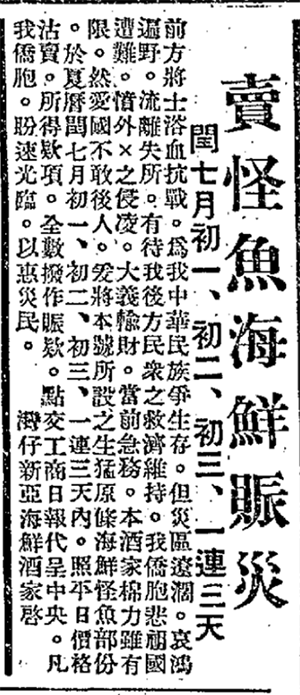 Information about New Asia's Weird Fish Restaurant is provided by 店老二老店
Information about New Asia's Weird Fish Restaurant is provided by 店老二老店
The announcement above was New Asia's fundraising campaign for the Sino-Japanese War in the mainland as advertised on the Kung Sheung Evening News on August 24, 1938.
The vanishing tastes 3: The radio and herbal tea
The entertainment industry had its golden days in the last century where the radio emerged as a trendy gadget for some people of the time. Before World War II, radio-related broadcasting services (i.e., Radio Hong Kong) were administered by the Postal Department of the Hong Kong Government; just like the other postal services, telegrams and postal orders, were also carried out at the General Post Office in Central.
 As for Hong Kong's first commercially operated cable radio station, Radio Rediffusion officially started broadcasting on March 1, 1949, which was located at the junction of Arsenal Street and Hennessy Road, being one of the most expensive areas in Wan Chai.
As for Hong Kong's first commercially operated cable radio station, Radio Rediffusion officially started broadcasting on March 1, 1949, which was located at the junction of Arsenal Street and Hennessy Road, being one of the most expensive areas in Wan Chai.
The subscription fees for Radio Rediffusion were not cheap at all, which called for $25 for installation and monthly fees of $9, taking into consideration that Wan Chai was mostly inhabited by the grassroots people where culture-of-sharing was quite common. Those who could not afford a radio would go spend 5 cents for a bowl of herbal tea to be seated at the shop for the sake of listening to the broadcasting. Interestingly enough, the herbal tea shops in the districts had attracted a great number of passers-by to converge at the storefront to freely share the broadcasting, thus making an issue for traffic concern. Following up on the traffic complaints, the Government had to issue warnings to the shops to have their amplifiers removed.
 The ban on amplifiers in the herbal tea shops as reported by Overseas Chinese Daily News on February 23, 1949.
The ban on amplifiers in the herbal tea shops as reported by Overseas Chinese Daily News on February 23, 1949.
Speaking of herbal tea shops, there might be just a few time-honored ones still left in Wan Chai, but in the 1950s and 60s, “there gotta be one near you”. It is said that in those years, Wan Chai was inhabited mostly by the grassroots people with many single men sharing a rented unit. They were mostly engaged in manual labor, thus would occasionally feel unwell and dizzy. With no family members to attend to their needs at home, they would go drink a bowl of herbal tea as the remedy. Therefore, herbal tea is also known as the "Unmarried Men's Tea."
Literary landscape in Wan Chai: "Little Japan" in 1920s Hong Kong
What would you think of when talking about Wan Chai? You may think of at least two different faces of Wan Chai: one is the highly developed Wan chai with the Convention and Exhibition Centre and surrounded by exquisite restaurants and business buildings; and the other side that is full of history, which also represented the secular landscape, along with the Gloucester Luk Kwok Hong Kong, Hung Shing Temple, and the Old Wan Chai Post Office, which is now one of the declared monuments in Hong Kong. The historical documents show that Wan Chai was one of the earliest developed districts in the 1840s. The Spring Gardens, which near the present Spring Garden Lane, was even one of the first official land sales. Soon after the European community moved out from the Spring Gardens, Wan Chai became where local Chinese live since the 1860s. It is a bit hard for us to imagine that once upon a time, Wan Chai was a place that is called "the little Japan" in Hong Kong during the 1920s.
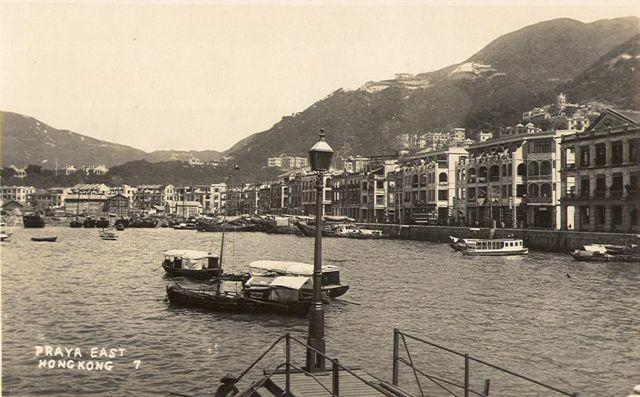 View of Praya East
View of Praya East
Tracing back to history, Wan Chai has always been a community that embraces diversity in ethnicity and culture. Starting in the 1910s, more Japanese came to Hong Kong for temporary residence for work and even settlement. The arrival of Maruyama (丸山商店) marked the beginning of Japanese business operations in Wan Chai. At that time, most of the Japanese shops, such as the Ishimoto Tokeiten (石本時計店) and the Ida Tokeiten (飯田時計店), sold Japan-made Seiko watches, and the Seaki Satoru hair salon (佐伯理髮店), were located in the Praya East Street(海傍東街), which was the coastal of Wan Chai before the Praya East Reclamation. With the hybrid mixture of Japan culture in a secular way, it can be said that Wan Chai was once indeed a little Japan in Hong Kong. This Japanese landscape in Wan Chai was at the same time being captured by Xie Chenguang (謝晨光), a young writer who deeply influenced by the Western modernism and the May Fourth Movement in the year of 1927. In 1927, Xie, who was only probably reach his end of puberty, published a short story named “Kato Yoshokuten” (加藤洋食店) –– there was indeed a Japanese restaurant with the same name in Wan Chai Praya East at that time –– on a Shanghai modernism literature magazine Huanzhou (幻洲). In his short story, he wishfully pointed out the Japanese landscape of Wan Chai:
There is something in Wan Chai that worth our attention. Though Wan Chai is under depression, compared to other places in V City [Victoria Hong Kong], many Japanese came and run their small business there in Wan Chai: porcelain shops, pharmacies, and a Japanese-style café that opened recently. These small shops are not far from the place where Japanese prostitutes live. (Chen Guang 1927, 539)
Xie was living in Wan Chai while the British colonial government was focusing on developing the Central and Western District to make it a metropolis in East Asia. Therefore, Xie intentionally compares Wan Chai to those developed places in the V City––Victoria Hong Kong––in his short story. The Kato Yoshoku that Xie wrote about was one of the Japanese-style western restaurants in Wan Chai. Besides, there was also some high-end Japanese washoku in the Praya East Street, including the Tokiwa Pavilion (常盤亭, ときわ亭), Tokyo Hut(東京庵), and the Otafuku (お多福). (Committee 2005, 93-94) Xie probably could not have imagined the Praya East Street, where he spent his leisure time and wrote his Hong Kong story, has in some sense “vanished” today––it became the Johnston Road in the inland Wan Chai after the reclamation scheme that completed in 1931. (Antiquities Advisory Board 2007) When the Praya East Street was still the coastline of Wan Chai, Xie established a literary society Dao Shing She(島上社) with a group of like-minded young modernists, Lu Lun (侶倫), Zhan Wen Bing(張吻冰), Cen Zhuoyun(岑卓雲), Huang Gu Liu(黃谷柳), and Chen Ling Gu(陳靈谷). They were dreaming about the future of Hong Kong Literature via publishing literary magazines, Tie Ma(鐵馬) and Dao Shang (島上). (Mei Ting 2018)
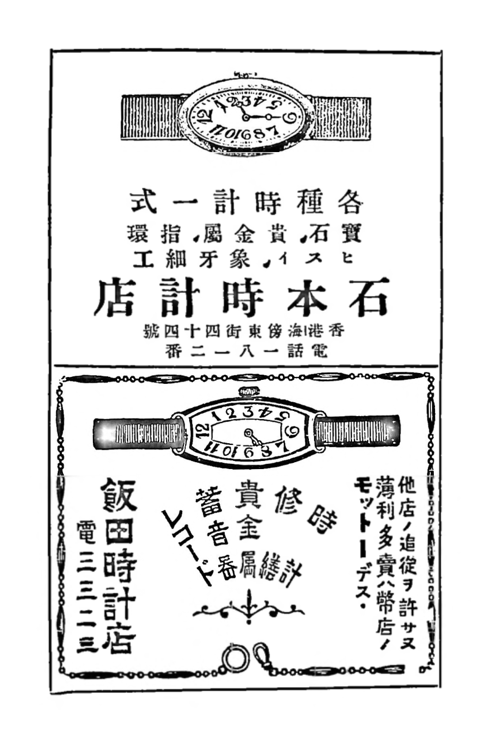
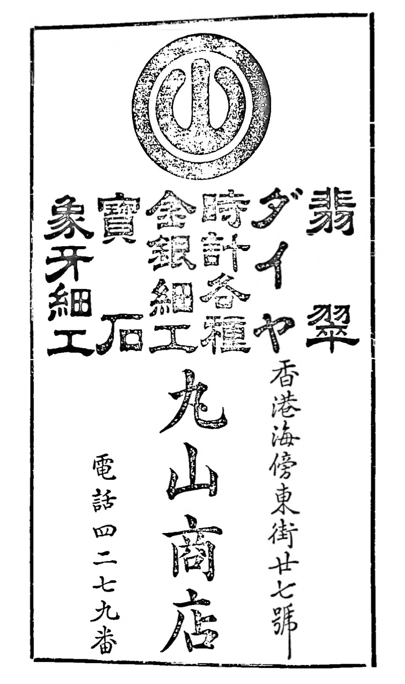 Advertisements of Japanese stores in Praya East
Advertisements of Japanese stores in Praya East
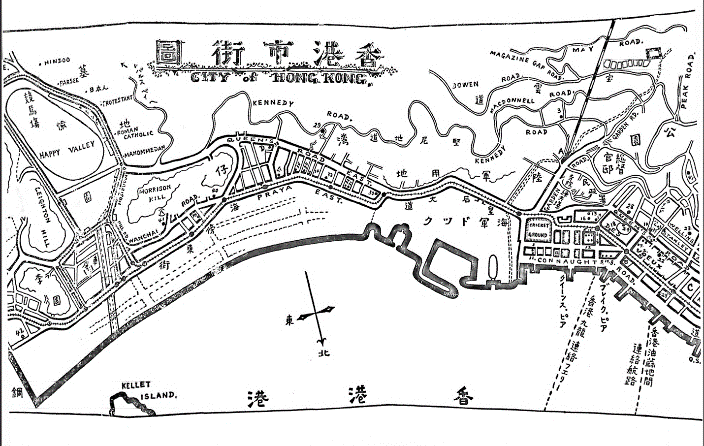 Map of Praya East drawn up by Japanese in Hong Kong
Map of Praya East drawn up by Japanese in Hong Kong
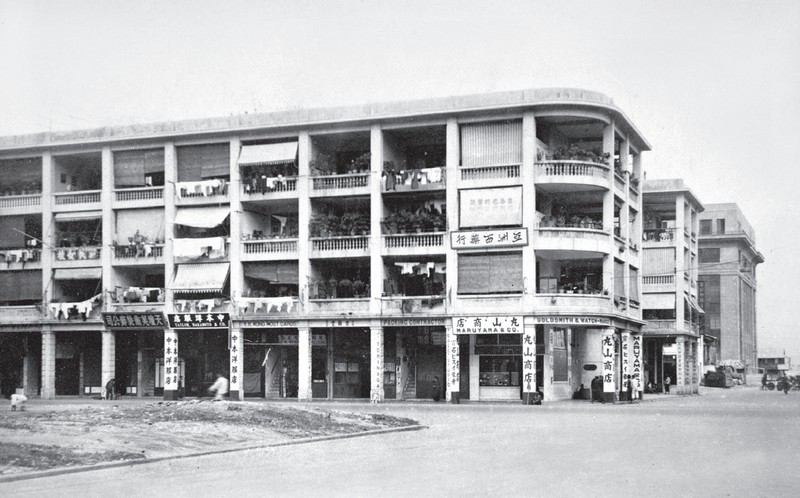 A Japanese store housed in a tenement
A Japanese store housed in a tenement
Nowadays, though Wan Chai is still a hybrid community, there is no more Japanese-Chinese mixtures landscape like the 1920s that only Xie and his friends had experienced. There are multi-national cuisines in Wan Chai today: exquisite French cuisines such as the JUNON restaurant, the Hong Kong-style western restaurant Loyal Dining, the traditional Hong Kong Café Kam Fung Restaurant, and The Pawn, the iconic landmarks and historical site that once been part of the Wan Chai Praya East. Fortunately, through the literary writings, we can still revisit the old Wan Chai.

 Covers of Literary Magazines
Covers of Literary Magazines
Literary landscape in Wan Chai: Bars, Chinese restaurants and night market
I am always afraid of writing Wan Chai as it is, indeed, a place that has a plentiful history and cultural diversity. Besides the Japanese landscape in the Praya East seacoast of Wan Chai during the 1920s, there are other faces of Wan Chai waiting for us. After the Praya East Reclamation Scheme in the 1930s, the Japanese landscape of Wan Chai was replaced by the livelihood of the Chinese-style restaurant, the bar district on Lockhart Road, and the night market of the Southorn Playground. Again, the above temporals of Wai Chai were being recorded by Hong Kong writers in their creations.
The Bar girls in Hong Kong
To a certain extent, the reclamation scheme has changed the secular livelihood of the Wan Chai communities because of the rapid development of the reclaimed lands. Lockhart Road, the street that builds on the reclaimed lands, is famous for its "bar district" near its western end. It is regarded as one of the backbone bar districts in Hong Kong Island now. Becoming a much more mixed cultural sphere with bars and restaurants was once considered primarily as a "red-light district" in early Hong Kong. After the reclamation scheme and the establishment of the China Fleet Club, the bar district became more and more bustling with noise.
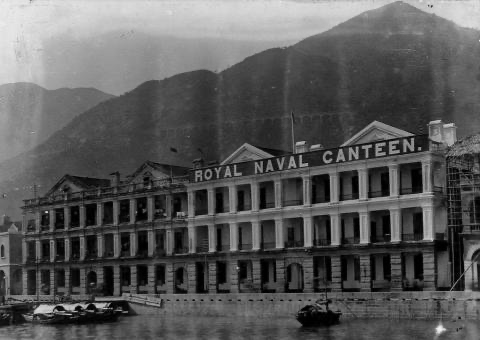 Taken around 1900s, Royal Naval Canteen, commonly known as Blue Buildings, at Wan Chai seafront. Source: Gwulo.com
Taken around 1900s, Royal Naval Canteen, commonly known as Blue Buildings, at Wan Chai seafront. Source: Gwulo.com
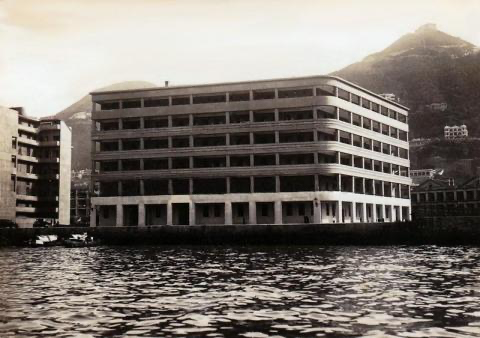 Since completion in 1934, China Fleet Club was the main leisure facility for members of the British Navy. It was headquarters of Imperial Japanese Navy when Hong Kong was under Japanese occupation in WWII. Source: Gwulo.com
Since completion in 1934, China Fleet Club was the main leisure facility for members of the British Navy. It was headquarters of Imperial Japanese Navy when Hong Kong was under Japanese occupation in WWII. Source: Gwulo.com
In the 1960s, with the growing demands of the entertainment business, the red-light district soon developed into an entertainment district that mainly entertained the US Navy because of the Cold War events. At that time, Wan Chai became literally the "world" of "Suzie Wong"—the countless bargirls who struggle for a living in Hong Kong. Richard Mason shares his romantic imagination on Wan Chai by the love story of how the bar girls in Wan Chai were crushing with those western travellers in his novel The World of Suzie Wong. The main character, Robert, a writer from the US, comes to Hong Kong and temporarily lives in Wan Chai and regards it as the 'little China' that satisfied his exotic imagination of Hong Kong, the "Pearl of the Orient", under the western gaze. Mason's mapping of Hong Kong is filled with Wan Chai's bars, rickshaws, cheap hostels, Chinese style floating restaurants, hillside shantytowns, ferry, etc. Lockhart Road, and the bars where numerous girls fight for life, become Mason's own treasure hunt for writing a popular paper-selling plot.
The story of Wan Chai bargirl Suzie Wong is definitely not a romantic one in the eyes of Hong Kong writer Liu Yichang. As well as there are always two faces of Wan Chai, one under the foreigners' gaze and one from the locals' perspective, Liu presented his localised version of Wan Chai bargirl in his Express' column in 1964. Liu criticised Richard Mason's novel in his Wan Chai story, Bargirl, with a more realistic image of bargirls, as he claimed.1 In Liu's writings, the bar district in the 1960s, mainly in Fenwick Street and Lockhart Road, relies on consumptions by the US Navy, and it makes the US Navy somehow superior in comparison to locals. Therefore, the locals include Yulan, seldom stay there after work. Although according to some historical records, there are some Hong Kong-style cafés and Shanghai restaurants serving local food.
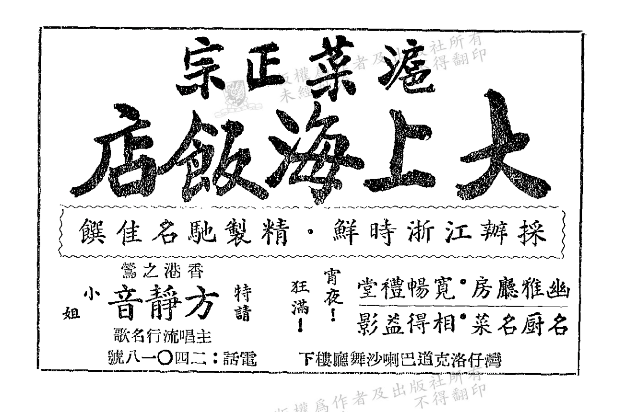 An advertisement of Shanghai Restaurant in Lockhart Road. Captured from the Novel Monthly, issue no.2, 1953
An advertisement of Shanghai Restaurant in Lockhart Road. Captured from the Novel Monthly, issue no.2, 1953
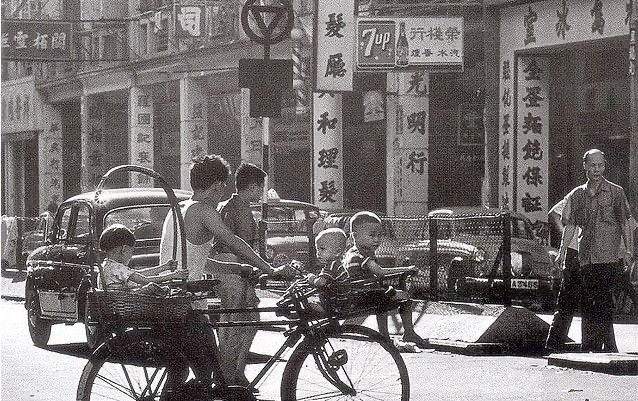 Lockhart Road in the 1960s, with the signboard of a Hong Kong-style café
Lockhart Road in the 1960s, with the signboard of a Hong Kong-style café
In memories of the Chinese - style restaurant
Although in Yulan's mind, Wai Chai is somehow a place that marks her pain and hardship, she enjoys a livelihood from the crucial working area. When she suffers from work, she brings her three little kids to the Longmen Restaurant(龍門大酒樓) to enjoy delicious dim sum: "After having such a delicious dim sum, her three little kids soon forgot the hardship in the early morning."2 The Longmen Restaurant is one of the three famous traditional Chinese-style restaurants in Wan Chai, the other two are the Ying King and New Asia's Monster Fish Restaurant.
The Bargirl, Yulan, may not be able to imagine how the restaurant later became the treasurable place of memories among the Wan Chai neighbourhoods. Chow Honfai (周漢輝), with a pen name of Bohemia (波希米亞), writes about his childhood in connection with the Longmen Restaurant's barbecued pork bun.3 Soon, the Longmen Restaurant, which would always be the landmark of Wan chai in Chow's mind, was closed in 2009.
Besides Longmen, the New Asia's Monster Fish Restaurant opened at 14 Fleming Road, is also a landmark in Wan Chai, especially its "Monster Fish" painting on the wall that always evoked interest from children. Both Xiao Si and Peng Cao, who have lived in Wan Chai since they were children, wrote about the mural. In Peng Cao's childhood memories, the most attractive thing about the mural is the mermaid in the middle. Even if the weird and horrible monster fishes in the painting are changed every year, but the mermaid is always laying with a beautiful gesture.4 The curiosity towards the mural is also shared by Xiao Si. She researches on the exact location of the New Asia's Monster Fish restaurant, Fleming Road, and the mural's details:
It is usual practice, for a Chinese style restaurant, to letting customers picking seafood in a fish tank. The wall beside the fish tank, the painting will be refreshed in the final season of the year. The lacquer will first brush it in white to cover the old drawing and then paint it with a new one, and it is the most exciting thing for the little kids living in Wan Chai of guesting how the lacquer paints the bronze diving men and the mermaid. Once they saw the whole picture of the mural, a new year came.5
For Xiao Si, the restaurant represented the collective memories of Wan Chai neighbourhoods. For those who live in Wan Chai, the mural symbolises their identity as part of the district.
 The Southorn Playground night market
The Southorn Playground night market
Beside bars and Chinese-style restaurants, the literary landscape of Wan Chai in Hong Kong literature also included the secular night market in Southorn Playground. In 1948, the southbound writers Huang Guliu(黃谷柳) started to write his novel column, “Story of Xiaqiu,” in The Chinese Business News(華商報). Through the eyes of Xia Qiu, a little boy that born and bred in Wanchai, Huang writes about the secular picture of the Southorn Playground in the late night:
It is indeed an alienated world: children, young adults and even middle-aged women roaming around the playground [……] Elderly is not common here. The playground is full of people who are starving and can only enjoy the taste of a failure.6
Wan Chai is obviously not a living hell in Xia Qiu’s mind because of the night market for the lower-class people who live an alternative life. The night market, as Huang Yu describes, is full of human touch between hawkers and customers.7 Huang yu is not the only one who enjoys the secular scene in the night market. Xiao Si used to spend her leisure time with her dad. Hanging out with dad to the Southorn night market, Xiao Si experienced the local stunt show spectacle.8 Today, Wan Chai is still as packed as it used to be. Plenty of new fine dining restaurants and cafes moved in. Still, this is the same Wan Chai that we used to love.
1 Li Meiting, “From Suzie Wong to Yulan: the female images and Hong Kong in Liu Yichang's Bargirl,” Collection of the 21st Awards for Creative Writing in Chinese.
2 Liu Yichang, Bargirl, p.66.
3 Bohemia, “Apart,”[不遇] The Writers Monthly, July 2006 issue 49, p.89.
4 Peng Cao, “A Chinese Pharmacy that only in a half size”[半間中藥店], Hong Kong Literature, Sep 2011, issue No. 321, p.26.
5 Xiao Si, “The New Asia's Monster Fish Restaurant,” Ming Pao Daily, 24 Aug 2006.
6 Huang Guliu, Story of Xia Qiu, Hong Kong: Joint Publishing, 1958, p.12.
7 Huang Yu, “The Evening of Southorn Playground”, Wenhuipo, 1958.10.7.
8 Xiao Si, “In Memories of Wan Chai (i),” Singtao Daily, 5 July 1977.
推薦食肆地圖 │ Map
出版資料及鳴謝 │ Acknowledgement
Organisers |
Sponsor |
Supporting Organisation |
|
|
|
Production Team |
Chief Editor: Patsy CHENG |
Assistant Editor: Phoebe CHAU |
Researcher and Writer on Food: TAM Wai Kin |
Translator: Cliff WONG |
Illustrator: LAM Pei |
Graphic Designer: Zero PAK |




